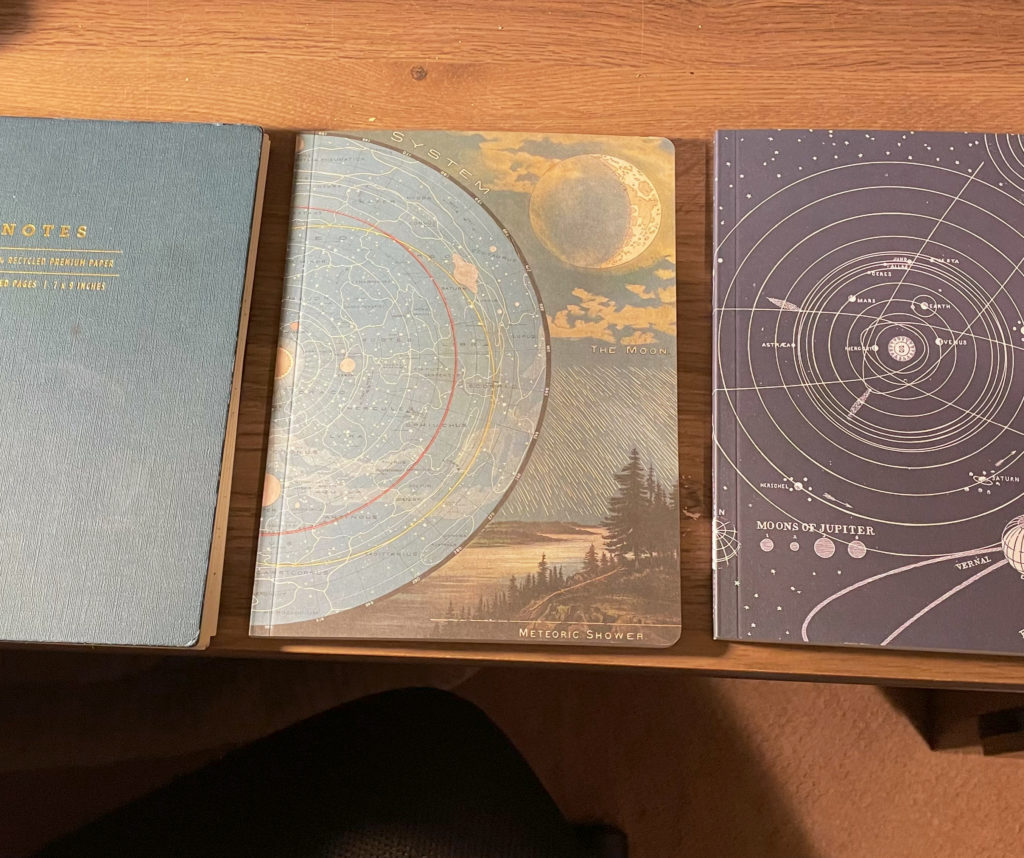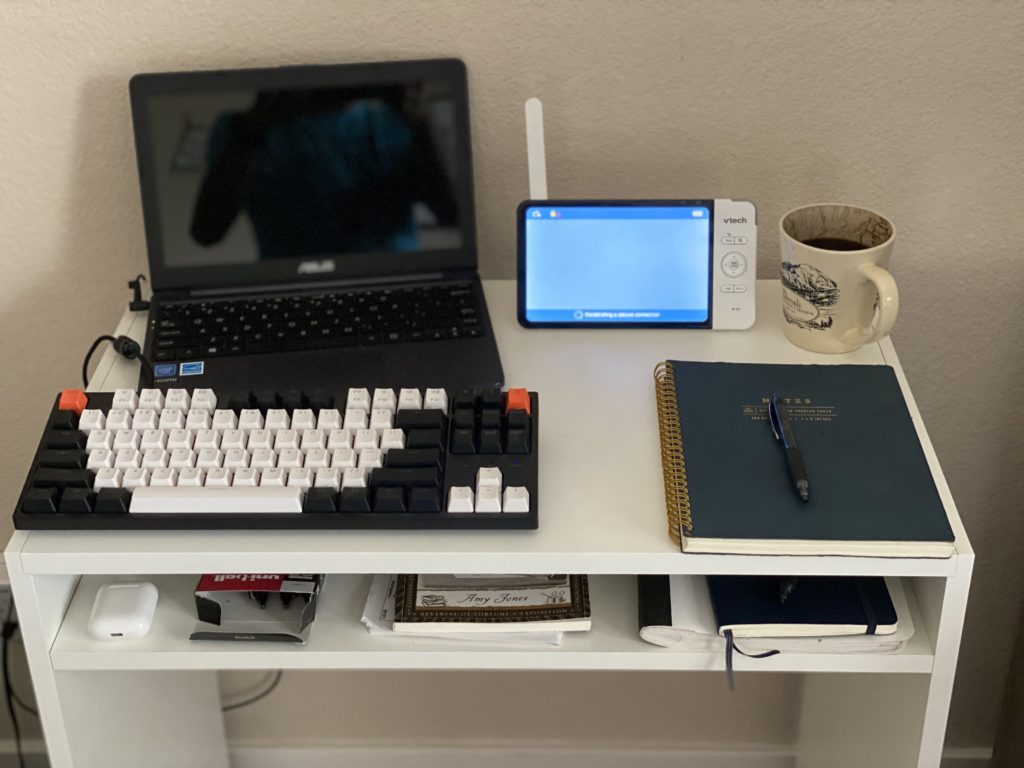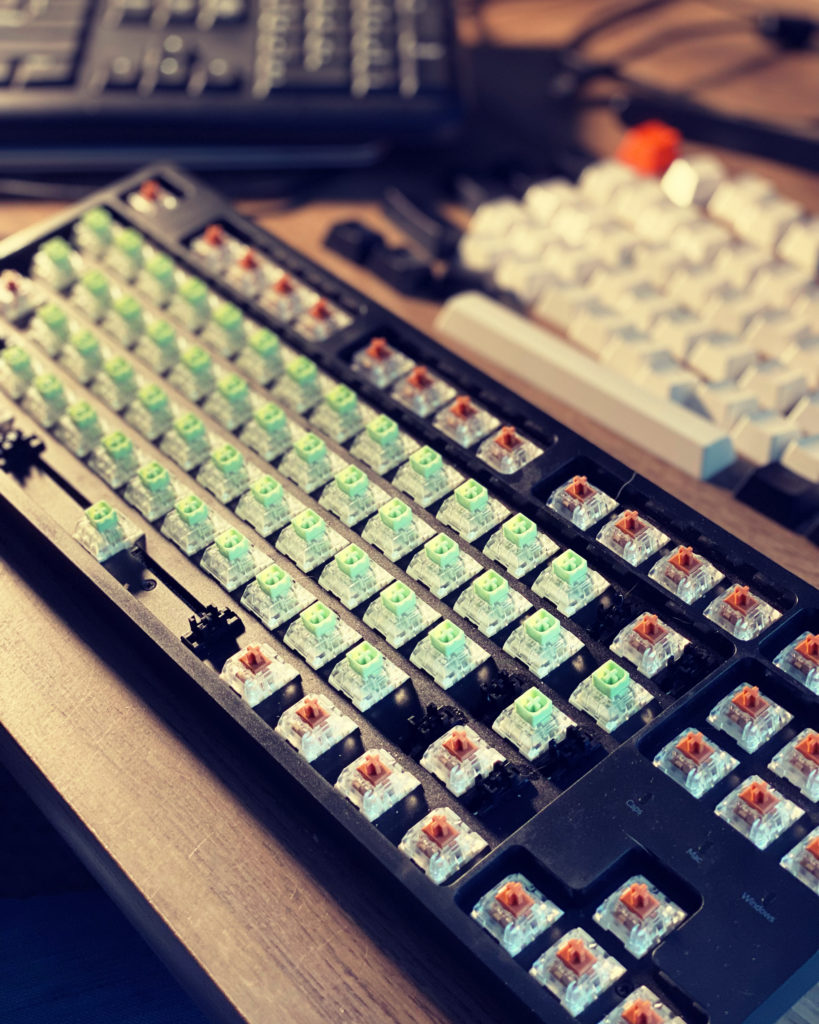I’ve decided to start a new series called How I Write.
I realized the other day that this author blog is over ten years old at this point, with a first post on July 24th, 2013 that was a tribute to Carl Sagan’s famous Pale Blue Dot commentary. Since then, both the tools with which and manner in which I write have changed markedly over time.
I’ll focus this post on my present set of writing tools — that is, the physical objects that enable my writing process and host the writing software I use, each of which will be the subject of later posts.
Here is my writing station. Yes, I keep it minimalist! A single shelf for spare notebooks and pens and such below a table with enough room for a small netbook, keyboard, notebook, baby monitor, and a cup of coffee.
The desk faces a corner, with a neutral spine chair to get some core stability in while writing and also to not get too comfortable and slouchy. I’m there to work on something, not lounge about.
I do brainstorming and initial drafting of snippets longhand, in a dedicated notebook for each project. They are generally “composition” size (which is typically A5 or very close) and lined. The one at left below is what I’m using for my in-progress novel Covenant of the Seasons, and a fairly generic spiral bound one from Target. The other two are more interesting, but thinner, and from Cognitive Surplus.

The small netbook laptop is dedicated to writing only, separate from my laptop for general personal use and certainly my work laptop. It is an Asus piece of shit that intentionally lacks the CPU or RAM to run anything shiny, with a screen intentionally too small to make any browsing, videos, or even reading satisfying or even comfortable. Not that I could browse on it if I wanted to… It runs LinuxMint with every non-system internet-capable application removed except Dropbox, to sync writing files. It doesn’t even have a browser! Hard to get distracted without internet.
(Note that the netbook is for drafting and basic revision only. For deep-dive editing and formatting, I will use my normal laptop with a monitor. I’m not a masochist.)
The keyboard is a Keychron C1 wired + backlit mechanical keyboard, shown here with the keycaps removed. Every key that inserts a character is fitted with Kalih Box Jade (heavy + clicky = typewriter feel!) switches, and all non-character keys are fitted with Gateron Pro 3.0 Brown (tactile + non-clicky) switches.
As for the longhand equivalent of a keyboard, the pens, I am less particular. I can specify more pens that I *don’t* like than any particular pen that I love. Still looking! However, in the meanwhile, I’ve found it hard to complain about either the Sharpie S-Gel 0.7mm pen or the Uniball Signo #207 Needle 0.7mm gel pen. I have yet to find a ballpoint that doesn’t annoy me – too much resistance/friction for long duration writing.
Stay tuned for at least two more posts as 2024 opens, on my Writing Software and Writing Process.

